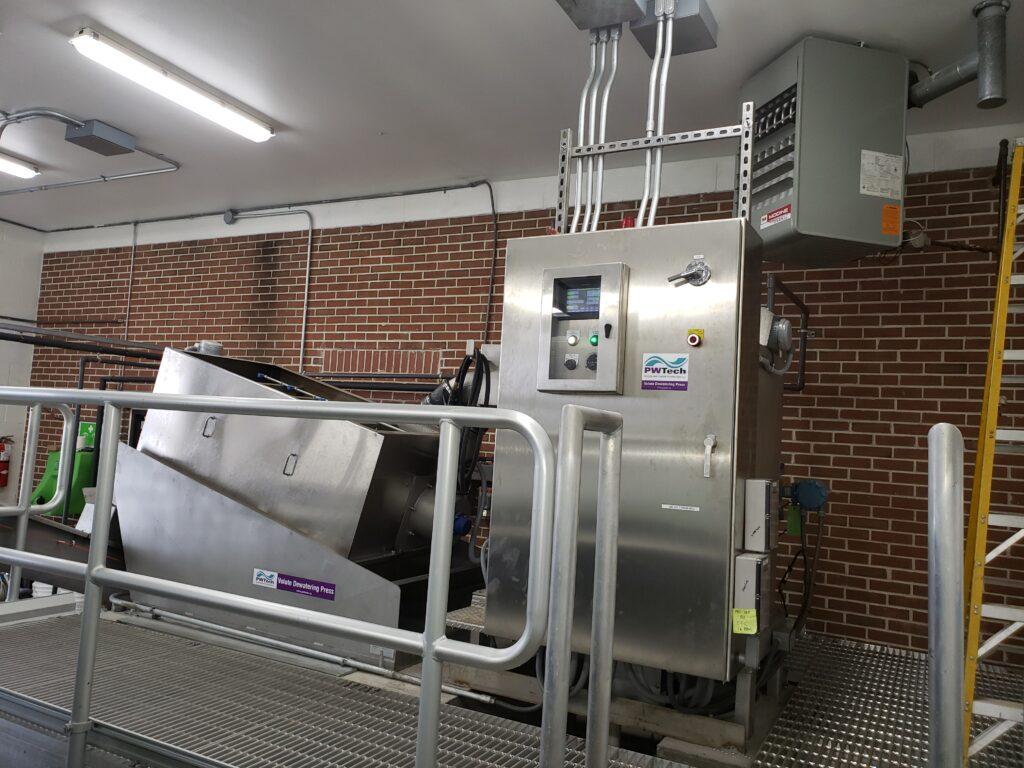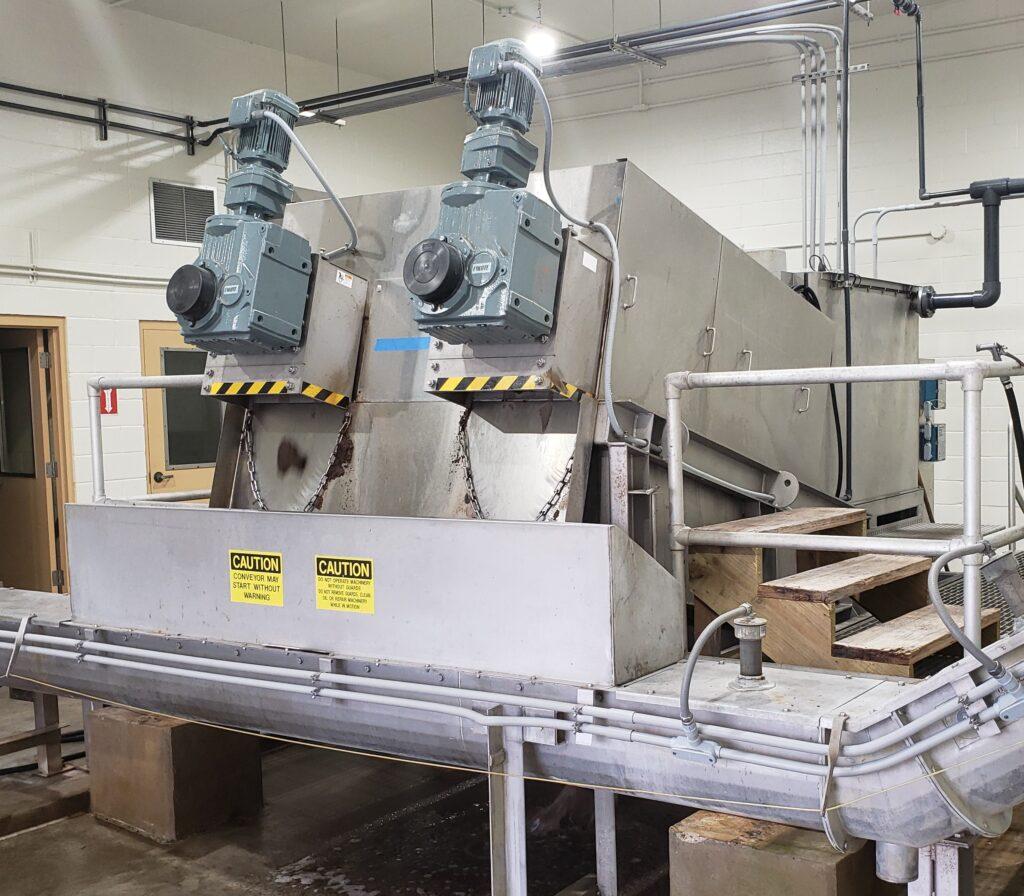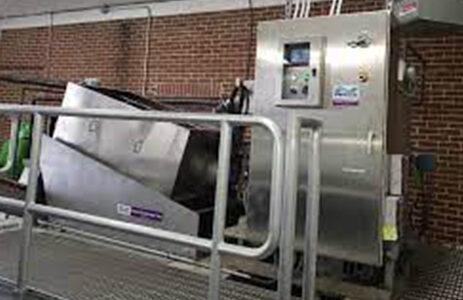Sludge Dewatering at WWTPs

Sludge dewatering plays a pivotal role in wastewater treatment facilities. PW Tech’s Volute Dewatering Press stands out as an innovative solution that surpasses conventional dewatering methods on multiple fronts. Engineered for exceptional dewatering efficiency, long-term cost-effectiveness, and user-friendly operation, it offers a cutting-edge approach.
Here’s how it works: Sludge initially enters a mixing tank, where it thoroughly combines with a polymer. Subsequently, the sludge progresses through a floc tank, where gentle mixing takes place. From there, it flows into the dewatering drum, where the magic happens. The key to this process lies in the unique dewatering drum itself. This drum achieves both sludge thickening and pressing in a single, streamlined operation. Remarkably, it can handle sludge with concentrations as low as 0.1% solids directly from wastewater treatment processes like sequencing batch reactors or oxidation ditches, producing a solid cake with a solids content exceeding 25%.
The Volute Dewatering Press is a screw press, but unlike traditional screw presses, the Volute Dewatering Press features a unique dewatering drum. The constant movement of the moving rings cleans the narrow gaps between the moving and fixed rings, preventing clogging. The moving rings also cut into the sludge cake, allowing additional surface area for the release of water.

In the first part of the drum, the press gently thickens the sludge by removing most of the water. The screw then squeezes the sludge even tighter as it moves towards the end, where it comes out as a dry cake.
Operation and Maintenance
The Volute Dewatering Press is fully automated, requiring very little operator attention other than periodic inspection. Depending on operating conditions, a partial overhaul of the dewatering drums may be necessary every five to ten years. This two-hour operation is accomplished in the field with minimal disruption to plant operation.
Benefits
- High Cake Solids
- Low Power Usage
- Low Installed Cost
- Low O&M Requirements
- Small Footprint
- Fully Automated
- Reduced Wash Water Consumption
- Minimal Noise, Low Odors
The enclosed dewatering process operates at speeds of under 10 rpm with minimal wear. The result is high cake solids, excellent filtrate, and minimal or no manpower required. The low power usage by the press and low water usage provide savings year after year.
The entire operation is controlled by the press control panel.
The Volute Press model sizes range from 10 GPM to 300 GPM, with a small footprint, and space for additional drums can be provided for future requirements.
Learn more about the PW Tech Volute Dewatering Press
PW Tech offers free pilot testing at WWTPs qualified customers. Contact Envirep to learn more about the Volute Dewatering Press.
Contact Envirep
Envirep/TLC serves the municipal and industrial water and wastewater market in Pennsylvania, New Jersey, Maryland, Delaware, the District of Columbia, Virginia, and West Virginia.
Do you need help selecting the right equipment for your application? Contact Envirep at 717-761-7884 or sales@envirep.com.
By Michael Gillespie, President at Envirep/TLC


